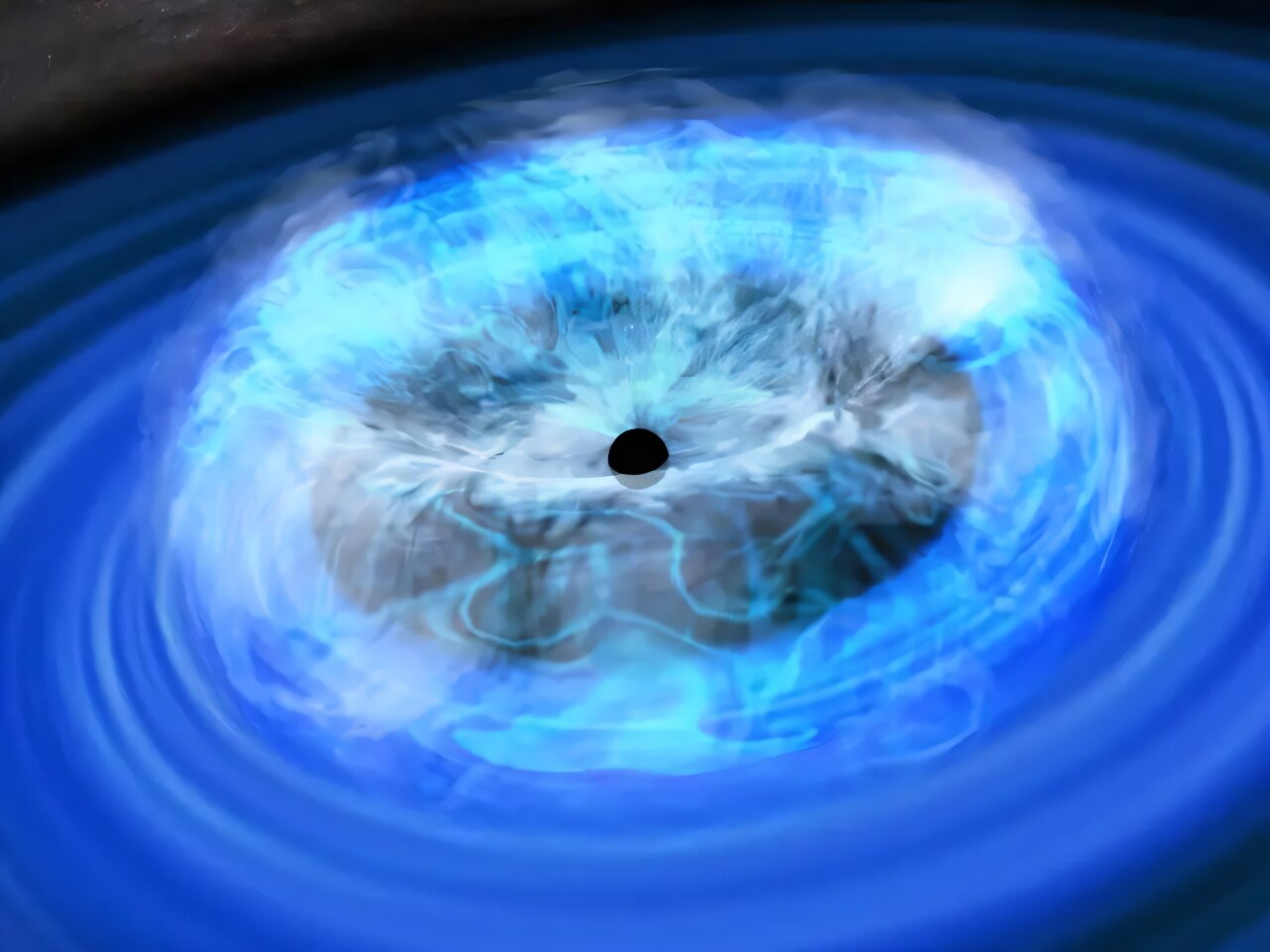
Artist’s rendering of the corona around a black hole. Credit: RIKEN
An international team of astronomers led by Matus Rybak (Leiden University, Netherlands) has proven, thanks to accidental double zoom, that millimeter radiation is generated close to the core of a supermassive black hole. Their findings have been accepted for publication in the journal Astronomy & Astrophysics and are available on the arXiv preprint server.
In 2015, Matus Rybak (Leiden University) and his colleagues were searching for cold gas in the galaxy RXJ1131-1231. This galaxy—a quasar with a supermassive black hole at its center—in the constellation Crater is a favorite of astronomers because there is another galaxy between it and Earth that acts as a lens. This makes the galaxy appear three times larger than it actually is, a phenomenon known as macrolensing.
Rybak and colleagues studied the galaxy using the ALMA telescope, which detects (sub)millimeter radiation from a plateau in northern Chile. They saw that the three images of the galaxy changed in brightness independently of each other. “That’s a smoking gun for microlensing, a phenomenon that occurs when a star is located between the foreground galaxy and the observer,” says Rybak. “We immediately knew we had to pursue this further.”
The combination of microlensing and macrolensing reveals things that remain invisible even with the best telescopes in the world and with macrolensing alone. “With this ‘double zoom’ (the magnification by the galaxy and that by the star), it’s as if you’re placing two magnifying glasses on top of each other,” says Rybak. In 2020, the team therefore looked at the galaxy again and was able to track the brightness differences of the quasar.
The astronomers observed that the quasar flickered on timescales of years. The fact that the quasar flickers in millimeter radiation is remarkable, because this radiation is mainly produced by calm dust and quiet gas. The researchers think that the radiation comes from the corona, a hot, magnetic and active doughnut-shaped band around the supermassive black hole. Millimeter radiation had been observed near a black hole before, but it remained unclear whether it was caused by dust or other mechanisms.
Rybak collaborated with Dominique Sluse (Leuven) and Frédéric Courbin (Barcelona), among others. In 2008, they were pioneers in the field of microlensing in visible light. Now, 17 years later, they have succeeded in doing this with millimeter radiation for the first time.
The researchers have now been allocated observation time to study the quasar with the Chandra X-ray Telescope. Ultimately, they want to use microlensing to study the temperature and magnetic fields close to the black hole. This is important because the conditions near the black hole influence the entire surrounding galaxy.
More information:
M. Rybak et al, Detection of millimeter-wave coronal emission in a quasar at cosmological distance using microlensing, arXiv (2025). DOI: 10.48550/arxiv.2503.13313
Provided by
Netherlands Research School for Astronomy
Citation:
Accidental double zoom reveals millimeter waves around supermassive black hole (2025, August 20)
retrieved 20 August 2025
from https://phys.org/news/2025-08-accidental-reveals-millimeter-supermassive-black.html
This document is subject to copyright. Apart from any fair dealing for the purpose of private study or research, no
part may be reproduced without the written permission. The content is provided for information purposes only.
